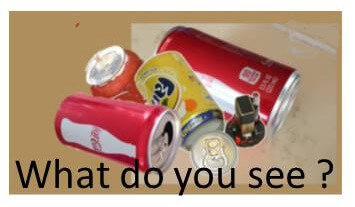 As I pulled out into the street today, I noticed a cardboard box on the curb, with trash spilling out of it. It hadn’t been there yesterday.
As I pulled out into the street today, I noticed a cardboard box on the curb, with trash spilling out of it. It hadn’t been there yesterday.
Suddenly a thought flashed into my head – could this be a bomb?
I drove off and forgot about it until later, when two news reports practically jumped off my computer screen at me.
IEDs in the today’s news.
- Fox News reported that two brothers in Pennsylvania were arrested for building and detonating multiple IEDs in their own community over winter break from college. (Nobody was injured.)
- A completely different article mentioned that Eric Harris and Dylan Klebold, the two boys responsible for the Columbine High School attack in 1999, had built and placed 99 IEDs as part of their plan. (15 students were killed and more than 20 injured.)
Of course, we’re familiar with IEDs in wartime settings. For a few years that seemed to be the biggest part of the news coming from Afghanistan.
But that was elsewhere. This article is about IEDs here in the U.S. and about the importance of “situational awareness.”
If IEDs are so easy to build that kids can do it, we can only assume that more explosions will take place, just like the ones reported on today.
How can we protect ourselves?
We need to know more.
This advisory is meant only as the briefest introduction. We are not explosives experts and, unlike most of the equipment we write about here, we have not personally tested any of the items we may talk about.
The questions we asked today . . .
What is an IED?
The name says it all. An improvised explosive device is not a traditional military weapon. It can be made out of a combination of “found” and conventional materials. An IED has five components: a switch to set it off, an initiator (fuse or blasting cap), the charge or explosive, some sort of power source, typically a battery, and a container to hold it all.
The image at the top of this article includes a couple of regular coke cans and two IEDs – the soda can upper left whose bottom has been punctured and “resealed,” and the yellow Fanta can with the battery power source and fuse stranding beside it, ready to be inserted (yellow can image thanks to Renful Premier Technologies).
The bomb can be set to go off using a timer, or when it is jostled, driven over or stepped on, remotely by radio frequency, or by a suicide bomber him or herself.
What does the IED do?
It explodes. Depending on the size of the bomb, its blast (with smoke, shrapnel and heat) can spread for 100’s of yards. A bomb aimed at bringing down people can be filled with nails, pellets, rocks, etc. to create more injuries.
Of course, an IED could as easily be filled with “dirty” radioactive material.
How can we recognize an IED?
Not easily. Of course, bomb detection technologies continue to be developed. They include machines – and dogs – that can detect traces of explosives in the air.
But everything I read, including several reports from Homeland Security, says that even security personnel can only look for:
- People exhibiting unusual or suspicious behavior (the guys in the airport each wearing just one glove!)
- Items where they don’t belong (an abandoned backpack – or that box of trash on the street by my house)
“Soft targets” of course will likely be the most attractive to bombers. These include landmarks, special events (like the Boston Marathon, or sporting events), infrastructure including transportation systems, and malls and parks.
All these are easy to get into, and often people are unfamiliar with the venue and thus will not notice things or people that are out of place.
What can we do?
In 2013 President Obama signed a special report: Countering Improvised Explosive Devices. The only paragraph in it that appeared useful to me was:
“[We must] Improve public awareness of IED threats and corresponding reporting of suspicious activity to local authorities through enhanced information sharing resources;”
So, the number one thing we can do is be alert to our surroundings, and report anything suspicious.
- If we see something that feels or looks doubtful, has a weird smell, is leaking or dripping — report it immediately to authorities.
- If we notice someone buying large quantities of what could be bomb-making supplies — chemicals, fertilizers, fuses, tape, peroxide — take note and report. (The Pennsylvania brothers purchased multiple cans of lighter fluid.)
Obviously, if you’re familiar with a given environment, you will be the best person to sense that something is out of the ordinary.
It’s the simple rule that our local police repeat often:
“See something? Say something!”
So, start paying more attention to your environment. Train your kids to get their noses out of their cell phones. This is a case where YOU have the biggest role to play for the safety of all.
Virginia
Your Emergency Plan Guide Team
P.S. I feel there is a lot more to this topic. If you are interested in more details, check out this recent article from Jan Glarum, counter-terrorism consultant and instructor:
http://www.abetteremergency.com/blog/2016/04/ieds-training-impact/
And the report from the Department of Homeland Security, quoted from above:
https://tripwire.dhs.gov/IED/resources/docs/Countering%20Improvised%20Explosive%20Devices.pdf
Don't miss a single Advisory.
Thank you for subscribing.
Something went wrong.
